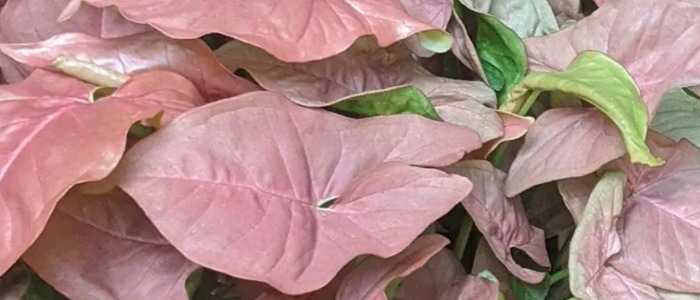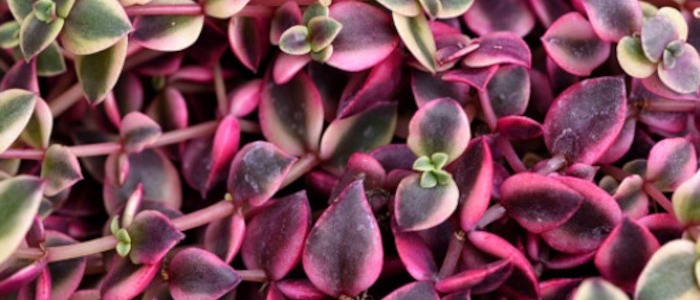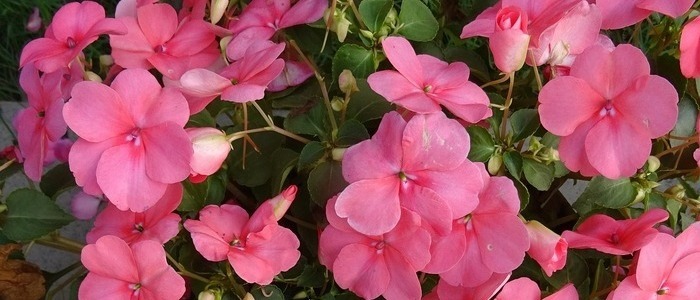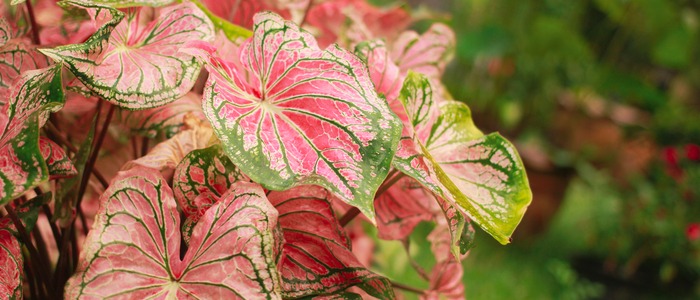Looking to add a splash of color to your home décor? The pink arrowhead plant is a great addition to any indoor garden because of its unique appearance and easy-care requirements.
Scientifically known as Syngonium podophyllum, the pink arrowhead plant, is a tropical plant native to Central and South America. Its leaves are arrow-shaped and have a stunning pink coloration that fades to green as the plant matures.
This plant is perfect for those who want to add a pop of color and texture to any indoor garden. Its distinctive arrow-shaped leaves come in a variety of shades, from deep green to vibrant pink, making it a popular choice among plant enthusiasts.
Additionally, the pink arrowhead plant is relatively low maintenance and can thrive in a variety of lighting conditions, making it an excellent choice for beginners.
Pink Arrow Plant Frequently Asked Questions
Is the arrowhead plant toxic to pets?
Yes, unfortunately, the arrowhead plant is toxic to both cats and dogs. The plant contains calcium oxalate crystals, which can cause irritation and swelling in the mouth, tongue, and throat if ingested. It's important to keep this in mind if you have pets in your home and consider placing the plant out of their reach or opting for a pet-friendly alternative.
How often do you water the pink arrowhead plant?
The frequency of watering the pink arrowhead plant depends on various factors such as the humidity level, temperature, and light conditions. In general, it is recommended to water the plant when the top inch of soil feels dry to the touch. Overwatering can lead to root rot, so it's crucial to ensure that the soil is well-draining and not waterlogged. It's also essential to avoid getting water on the leaves, as this can lead to fungal diseases.

How to care for the pink arrowhead plant
There are a few key things you need to keep in mind. if you want to keep your pink arrowhead plant thriving. Here is list of the key ones.
1. Watering: The pink Arrowhead plants prefer moist soil, so make sure to water them regularly. However, avoid overwatering, as this can lead to root rot.
2. Lighting: These plants thrive best in bright, indirect light. So, avoid placing them in direct sunlight, as it can scorch their leaves.
3. Humidity: Pink Arrowhead plants prefer high humidity levels. You can increase humidity by misting the leaves or placing a humidifier nearby.
4. Fertilizing: Feed your pink arrowhead plant with a balanced fertilizer once a month during the growing season.
5. Repotting: These plants need to be repotted every 1-2 years to allow their roots to grow. Use a well-draining potting mix and a pot that is slightly larger than the current one. By following these tips, you can ensure that your pink arrowhead plant stays healthy and beautiful.
By following these guidelines, your pink arrowhead plant will thrive and remain healthy and beautiful for years to come.
How to propagate the pink arrowhead plant
To propagate the pink arrowhead plant, you can take stem cuttings from a healthy plant, Make sure to use clean tools when taking cuttings to prevent the spread of disease.
Place the cuttings in a pot with moist soil and provide bright, indirect light. It’s important to note that propagating plants can take time and patience, so don’t be discouraged if it doesn’t happen immediately. Once the new arrowhead plants have established roots and grow well, you can transplant them into their own pots or your garden.
Tips for Pruning the Pink Arrowhead Plant
Pruning the pink arrowhead plant is very important if you want to maintain its health and promote growth. Pruning helps to remove dead or damaged leaves and control the plant’s size and shape It also encourages the development of new shoots. Additionally, pruning can prevent the plant from becoming too dense and overcrowded, which can lead to poor air circulation and an increased risk of disease.
Here are four things to consider when pruning the pink arrowhead plant:
1. Prune in the spring or summer months.
2. Use clean and sharp pruning tools.
3. Cut just above a leaf node or bud to encourage new growth.
4. Remove any dead or damaged leaves or stems.
With proper pruning, your pink arrowhead plant will thrive and continue to add beauty to your space. To be on the safe side remember to always take great care when pruning, as this will help ensure your plant’s health and longevity. By following these simple tips, you can keep your pink arrowhead plant looking its best for years to come.
Problems Found in the Pink Arrowhead Plant
In order to ensure the health and vitality of your pink arrowhead plant, it is important to take into consideration all of these potential factors that may negatively impact its growth. Here are five common problems found when growing the pink arrowhead plant::
1. Overwatering: Pink arrowhead plants are susceptible to root rot if they are overwatered.
2. Lack of light: These plants require bright, indirect light to thrive. If they are not receiving enough light, they may become leggy and weak.
3. Pests: Common pests that can affect pink arrowhead plants include spider mites, mealybugs, and scale insects.
4. Nutrient deficiencies: If the plant is not receiving enough nutrients, it may exhibit yellowing leaves, stunted growth, and poor overall health.
5. Improper temperature: Pink arrowhead plants prefer temperatures between 60-75°F. If they are exposed to temperatures outside of this range, they may experience stress and damage. It is important to monitor the temperature and provide appropriate care to ensure the plant’s health.
You can help your plant thrive and flourish. With proper care and attention, your pink arrowhead plant can be a beautiful and vibrant addition to your home or garden.
Conclusion
In conclusion, the pink arrowhead plant make beautiful houseplants; however taking care of this plant requires regular watering, indirect sunlight, and occasional fertilization. It is important to keep the soil moist but not waterlogged and to avoid exposing the plant to direct sunlight or cold drafts. With proper care, the pink arrowhead plant can thrive and add beauty to your indoor space.
.
Other Pink House Plants













